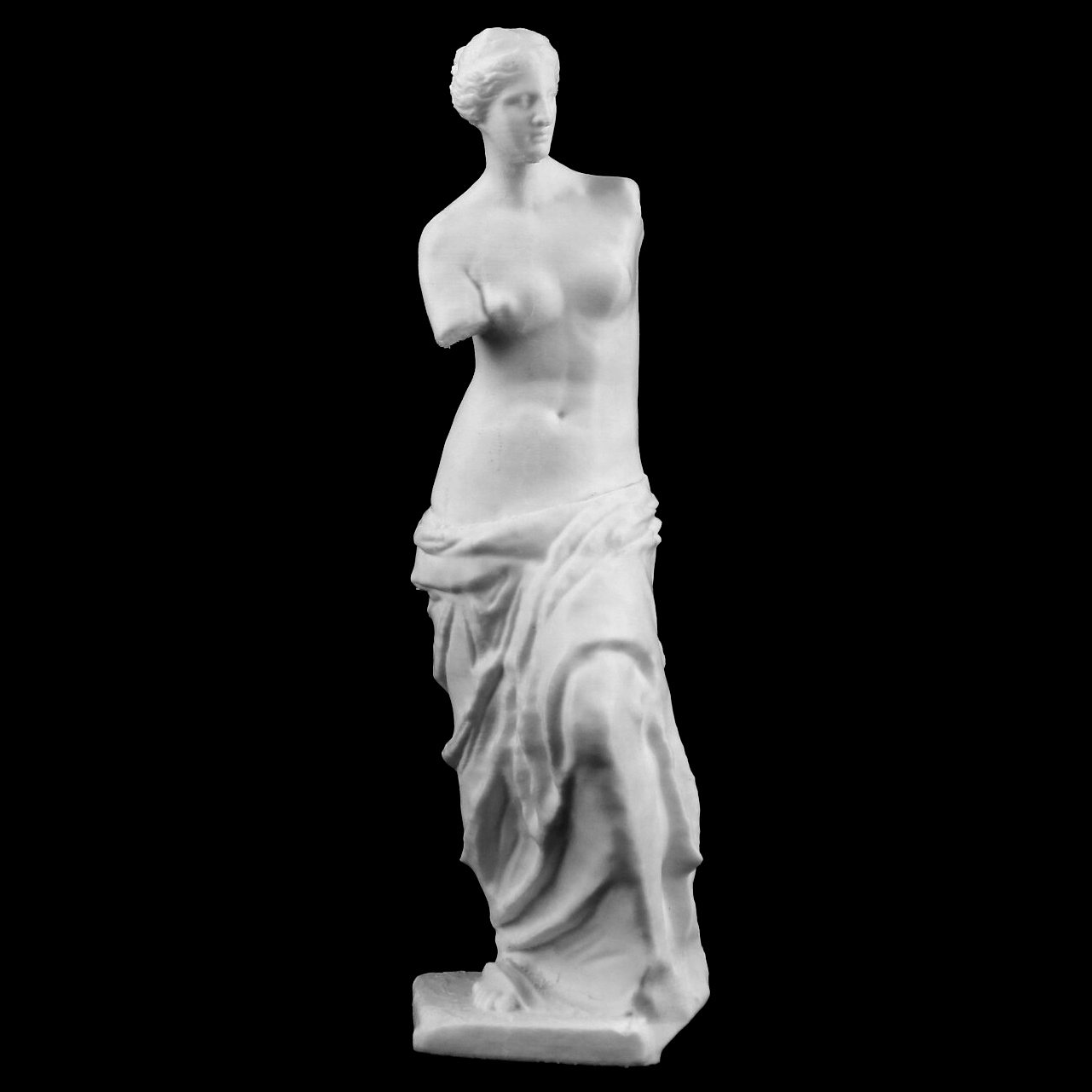
Venus de Milo at The Louvre, Paris
myminifactory
This captivating statue of a goddess has captivated and enthralled since its discovery on the island of Melos in 1820. Is it Aphrodite, often depicted half-naked, or the sea goddess Amphitrite, revered on Milo? The statue embodies sculptural research during the late Hellenistic Period: classic in essence, with innovative features such as the spiral composition, positioning in space, and the fall of drapery over the hips. The Venus de Milo was discovered in 1820 on the island of Melos (Milo in modern Greek) in the south-western Cyclades. The Marquis de Rivière presented it to Louis XVIII, who donated it to the Louvre the following year. The statue won instant and lasting fame. Essentially two blocks of marble, it is comprised of several parts which were sculpted separately (bust, legs, left arm and foot) then fixed with vertical pegs, a technique common in the Greek world (especially in the Cyclades, where this work was produced around 100 BC). The goddess originally wore metal jewelry — bracelet, earrings, and headband — of which only the fixation holes remain. The marble may have been embellished with (now faded) polychromy. The arms were never found. The goddess is shrouded in mystery, her attitude a persistent enigma. The missing pieces of marble and absence of attributes made restoration and identification difficult. A whole range of positions have been suggested: leaning against a pillar, resting her elbow on Ares' shoulder, or holding various attributes. According to whether she held a bow or an amphora, she was Artemis or a Danaid. She is popularly thought to represent Aphrodite, due to her half-nakedness and sensual, feminine curves. She may have held an apple — an allusion to the Judgement of Paris — a crown, a shield, or a mirror in which she admired her reflection. However, she might also be the sea goddess Amphitrite, revered on the island of Milo. The statue has sometimes been thought to be a replica, freely inspired by an original from the late 4th century BC, due to its resemblance to the Aphrodite of Capua (Museo Archeologico Nazionale, Naples) — a similar style Roman work, copy of a Greek original. The Venus de Milo certainly revives the classical tradition, but appears to be a classicizing re-creation dating from the late 2nd century BC. The goddess's air of aloofness, the harmony of her face and impassivity are stamped with the aesthetics of the 5th century BC; the hairstyle and delicate modeling of flesh evoke the works of 4th-century sculptor Praxiteles. However, the sculpture reflects innovations that appeared during the Hellenistic period, between the 3rd and 1st centuries BC. The spiral composition, positioning of the figure in three-dimensional space, and small-breasted, elongated body are characteristic of this period. The goddess is arrested in time, holding her legs together as the drapery slides over her hips. Her nudity contrasts with the effects of light and shade of the finely-detailed drapery. This object is part of "Scan The World". Scan the World is a non-profit initiative introduced by MyMiniFactory, through which we are creating a digital archive of fully 3D printable sculptures, artworks and landmarks from across the globe for public access. Scan the World is an open source, community effort, if you have interesting items around you and would like to contribute, email stw@myminifactory.com to find out how you can help.
With this file you will be able to print Venus de Milo at The Louvre, Paris with your 3D printer. Click on the button and save the file on your computer to work, edit or customize your design. You can also find more 3D designs for printers on Venus de Milo at The Louvre, Paris.
